#styles of saree
Explore tagged Tumblr posts
Text
Exploring the Timeless Elegance of Saree Draping Styles Across India
The saree is not just a garment in India; it is a cultural symbol, an art form, and a timeless statement of grace. Across the diverse regions of India, the saree takes on numerous forms, styles, and meanings, with each state adding its unique twist to the draping techniques and fabric choices. From traditional styles that have been preserved for centuries to modern adaptations, saree wearing is both versatile and vibrant, catering to various occasions, climates, and tastes. Here, we delve into some of the most popular different types of saree wearing styles from different parts of India, each reflecting the culture and heritage of its region.
1. Nivi Style (Andhra Pradesh)
The Nivi style, originating from Andhra Pradesh, is perhaps the most commonly recognized saree draping method in India and globally. It involves tucking the saree around the waist, with pleats formed at the center. The pallu, or end of the saree, is draped over the left shoulder, creating a graceful look. This style is popular due to its simplicity and ease, making it an everyday choice for Indian women and a classic choice for formal occasions.
2. Bengali Style (West Bengal)
The Bengali saree style is known for its elegant simplicity and distinct draping method. Traditionally worn without pleats at the waist, the saree is wrapped around the body and then draped over the left shoulder, with the end pulled back over the right shoulder in a fan-like arrangement. This style often involves heavy cotton or silk sarees with bold red borders, symbolizing tradition and heritage. The Bengali saree drape is commonly seen during Durga Puja and Bengali weddings, embodying the spirit of Bengal.
3. Gujarati Style (Gujarat)
Popular in Gujarat and Maharashtra, the Gujarati saree drape is known for its unique way of displaying the saree’s intricate pallu. The saree is tucked in at the back and brought to the front, with pleats tucked at the waist. The pallu is then draped from the right shoulder and brought across the chest to the back, creating a distinctive “V” shape. This style is often used in traditional ceremonies, especially by brides, as it highlights the pallu’s embroidery and motifs.
4. Maharashtrian Nauvari Style (Maharashtra)
The Nauvari saree, commonly worn by women in Maharashtra, is known for its unique draping style that resembles the look of dhoti pants. This saree is traditionally nine yards long (hence the name “Nauvari,” meaning nine yards) and requires no petticoat underneath. The saree is wrapped between the legs, allowing greater ease of movement, which was especially beneficial for the women warriors of Maharashtra’s history. The Nauvari saree is often adorned during cultural events, folk dances, and religious ceremonies, showcasing Maharashtra's vibrant culture.
5. Madisaru Style (Tamil Nadu)
Madisaru is a traditional saree draping style seen among Tamil Brahmin women, especially during festivals and weddings. This style uses a nine-yard saree and resembles a dhoti-pant drape similar to the Maharashtrian style. Traditionally, the saree is wrapped in a way that allows the lower half to resemble pants, offering ease of movement. Madisaru sarees are worn by women for religious ceremonies and symbolize cultural reverence, particularly within the Tamil Iyengar and Iyer communities.
6. Coorgi Style (Coorg)
The Coorgi or Kodagu saree draping style is native to the Coorg region in Karnataka. Known for its unusual way of tying the pleats at the back and bringing the pallu over the shoulder from the back to the front, it’s a unique style that beautifully showcases the saree’s pallu. Traditionally worn by Coorg brides, this style is practical and elegant, symbolizing the rich heritage and customs of the Kodava people.
7. Assamese Mekhela Chador (Assam)
The Mekhela Chador from Assam is a two-piece saree that is worn with an entirely different approach than a traditional saree. The bottom piece, known as the mekhela, is draped like a skirt, while the chador, the upper piece, is tucked in at the waist and wrapped around the body. The Mekhela Chador is made from Assam’s famous silk, especially Muga and Pat, which are known for their exquisite texture and durability. This outfit is commonly worn during Bihu festivals and Assamese weddings, showcasing Assam’s textile artistry.
8. Kerala Kasavu Style (Kerala)
The Kerala Kasavu saree, commonly worn during festivals like Onam and Vishu, features a unique draping style that emphasizes simplicity and elegance. The saree is typically white or cream with a golden border and draped with minimal pleats at the front. The pallu is elegantly draped over the left shoulder. This style is popular among Malayali women and is worn to represent purity and tradition, especially during cultural events and religious ceremonies.
9. Goan Kunbi Style (Goa)
The Kunbi saree style, traditionally worn by the tribal women of Goa, is draped in a very practical and unique way. It is worn without pleats and tied over the shoulder with a knot, creating a comfortable fit that is ideal for daily chores. This style has recently been revived by designers who incorporate it into modern saree styles, highlighting Goa’s rich cultural heritage.
10. Modern Butterfly Style
The Butterfly style, also called Bollywood style, is a modern adaptation of the classic Nivi drape. It’s characterized by pleated, narrow front pleats and a very slim, often embellished pallu. This drape is popularized by Bollywood actresses and designers and is a common choice at red-carpet events or high-profile weddings. It adds a glamorous touch to the traditional saree, showcasing the curves and elegance of the wearer.
11. Rajasthani and Marwari Style (Rajasthan)
In Rajasthan, the saree is draped with a focus on modesty and grace. The Rajasthani style involves wrapping the pallu around the head as a ghoonghat (veil) to signify respect and traditional values. The pleats are tucked in at the waist, with the pallu draped over the right shoulder. Bright colors, mirror work, and bandhani (tie-dye) patterns are commonly featured, and this style is frequently seen at Rajasthani weddings and festivals.
12. Odisha Style (Odisha)
The Odisha saree drape, also called the "Sambalpuri" style after Odisha’s famous Sambalpuri sarees, has a unique twist to the classic drape. It features box-pleats at the front and often involves intricate ikat patterns. The saree is draped with the pallu across the front, giving it a distinguished appearance. This style is deeply tied to Odisha’s cultural heritage and is especially popular during festivals and weddings.
Conclusion
Each saree draping style tells its own story, steeped in the cultural and historical fabric of India’s regions. From the graceful Nivi style to the distinct Assamese Mekhela Chador, these variations reflect the diverse ways in which women across India have adapted the saree to their lifestyles and traditions. As these styles continue to evolve, they allow both tradition and modernity to blend seamlessly, ensuring that the saree remains an iconic piece of clothing that transcends time and geography. Whether for everyday wear, festive occasions, or modern styling, the saree endures as a symbol of elegance, adaptability, and identity for millions
0 notes
Text
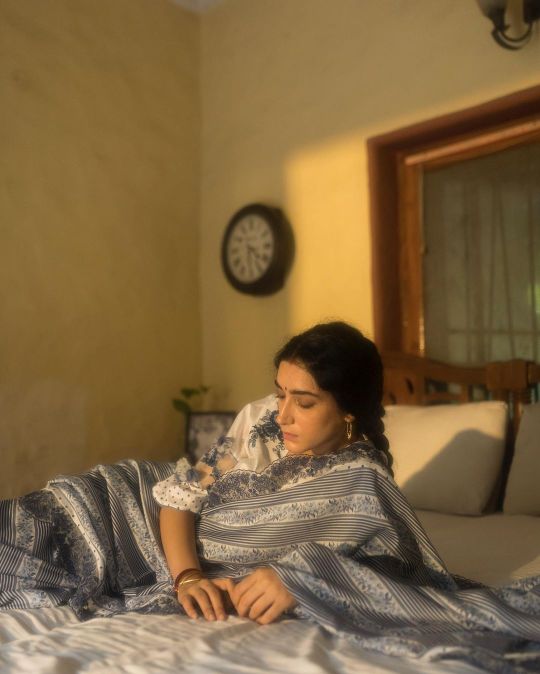
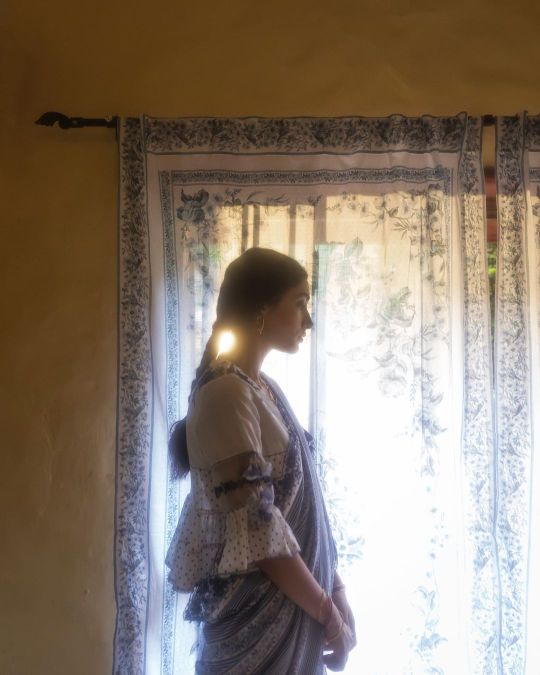
dopahar: jasmeet devgn for torani ph. vansh virmani
510 notes
·
View notes
Text




keeping it desi <<3
#desi style#desi humor#desi tag#desi girl#desi stuff#desiblr#saree#sareelove#bengali#tumblr girls#girlblogging#tumblrpost#tumblog#tumblr blog#desi tumblr#tumblr#kolkata#girlhood#how i love being a woman
26 notes
·
View notes
Text

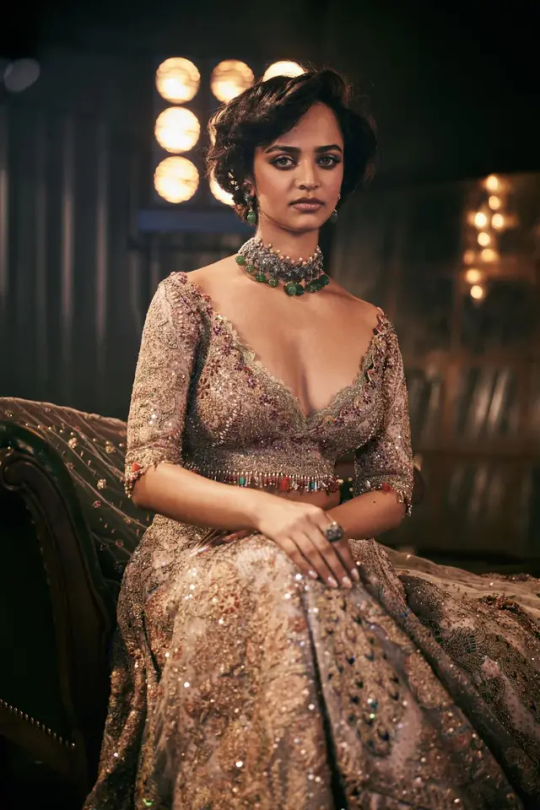

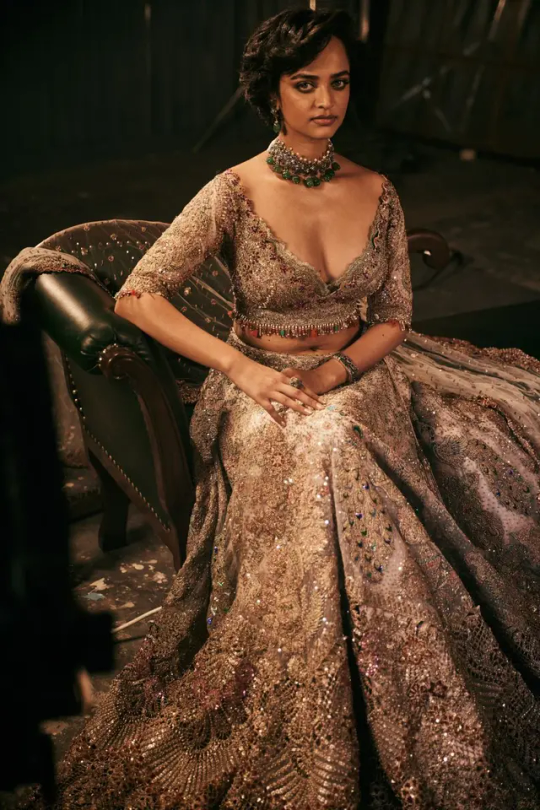
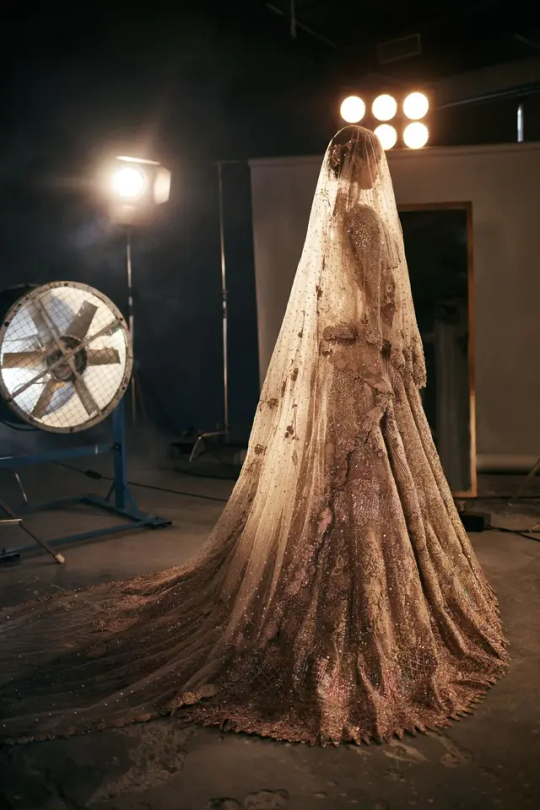
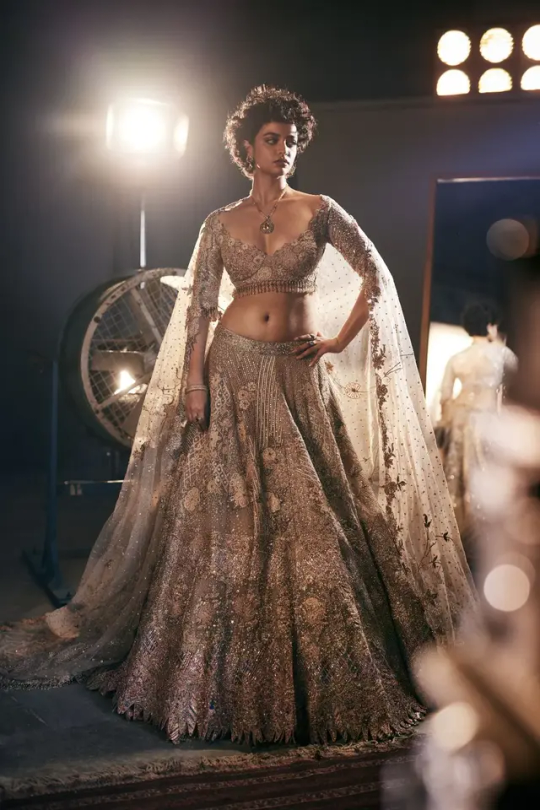
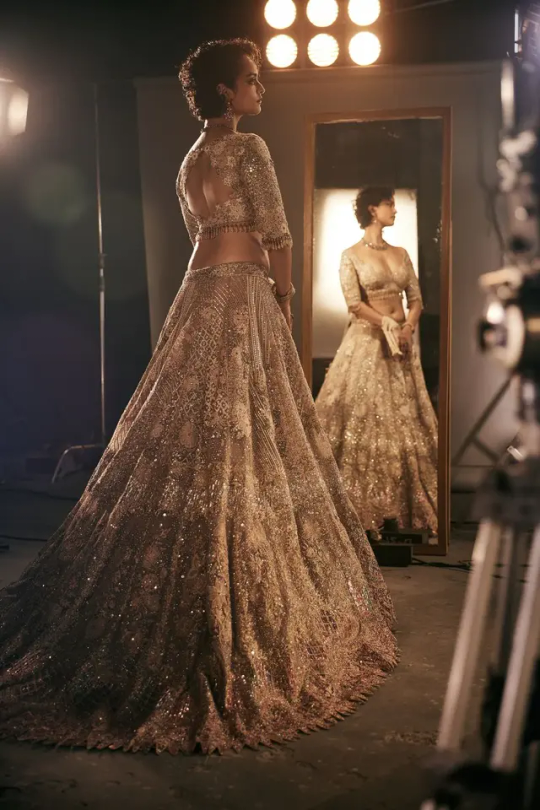
Rimple and Harpreet - Les Cinephiles Bridal Collection
#love the hair style on this model#this is PURE art#bollywood2#desi fashion#desifashion#desi couture#desi model#bridal#brides#brown model#desi models#sari#saree#editorials#jewellry#jewelry#art#fashion#editorial
129 notes
·
View notes
Text


𝐌𝐞𝐞𝐧𝐚𝐤𝐬𝐡𝐢 𝐂𝐡𝐚𝐮𝐝𝐡𝐚𝐫𝐲 𝐬𝐭𝐮𝐧𝐬 𝐢𝐧 𝐚 𝐫𝐚𝐝𝐢𝐚𝐧𝐭 𝐘𝐞𝐥𝐥𝐨𝐰 𝐒𝐚𝐫𝐞𝐞 𝐰𝐢𝐭𝐡 𝐚𝐧 𝐢𝐧𝐭𝐫𝐢𝐜𝐚𝐭𝐞 𝐖𝐡𝐢𝐭𝐞 𝐄𝐦𝐛𝐫𝐨𝐢𝐝𝐞𝐫𝐞𝐝 𝐁𝐨𝐫𝐝𝐞𝐫
Meenakshi Chaudhary’s latest look in a stunning yellow saree with a delicate white embroidered border radiates elegance and traditional charm. This captivating saree is perfect for festive occasions, blending classic and modern styles beautifully. Meenakshi brings out the grace of the attire, proving why sarees are timeless. Dive into the details of this gorgeous look and get inspired by Meenakshi’s impeccable sense of style.
Regards, Waves Institute of Fashion Designing
#meenakshi chaudhary#saree#saree love#ethnic fashion#indian actress#yellow outfit#traditional look#saree lovers#indian wear#fashion inspo#celebrity style#bollywood#bollywood fashion
8 notes
·
View notes
Text
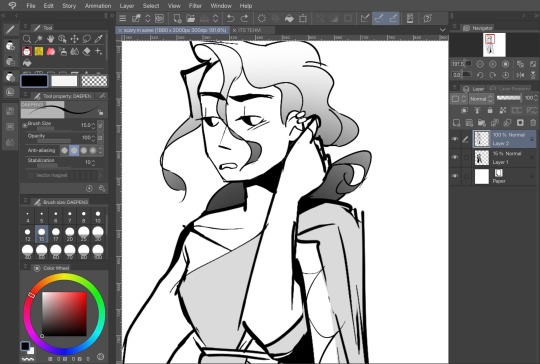
scary marlowe 🥹
#wip#dndads#dungeons and daddies#digital art#fanart#scary marlowe#I’m testing out different saree drapings/styles and using her as a model#because I miss doodling her#I think I’ll like a saree-pants combo on her more#because#well.#come on#its scary#anyway I’m still alive!#just so. SO busy with school you dont even mnow
48 notes
·
View notes
Text

#fat character#fat positive#cryptidart#trans#nonbinary#it/she/he#the pilot#<<< oc name for now#he’ll get a name name but for now character sare being created for roles#orange peel and peach pits#<<< VN working title#if this ever turns into something lol#we’ll see#the vibes in my head are fun tho#huuuuugely influenced style wise by turnipwine’s b+w stuff
68 notes
·
View notes
Text

2 notes
·
View notes
Text
Keerthy Suresh's Saree Style



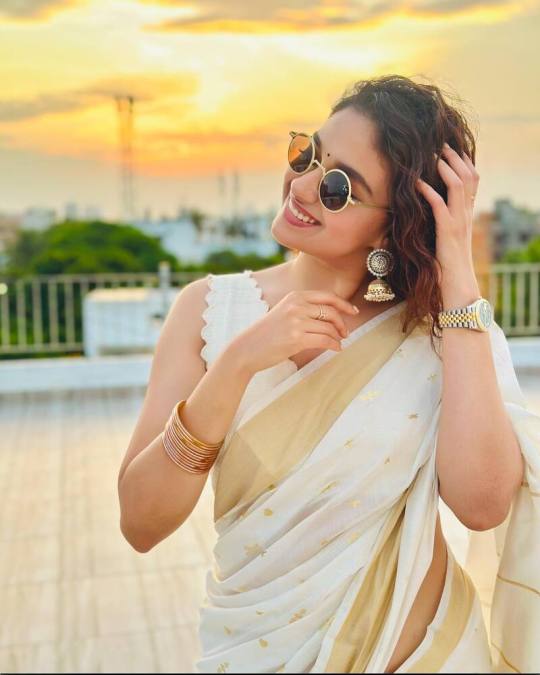
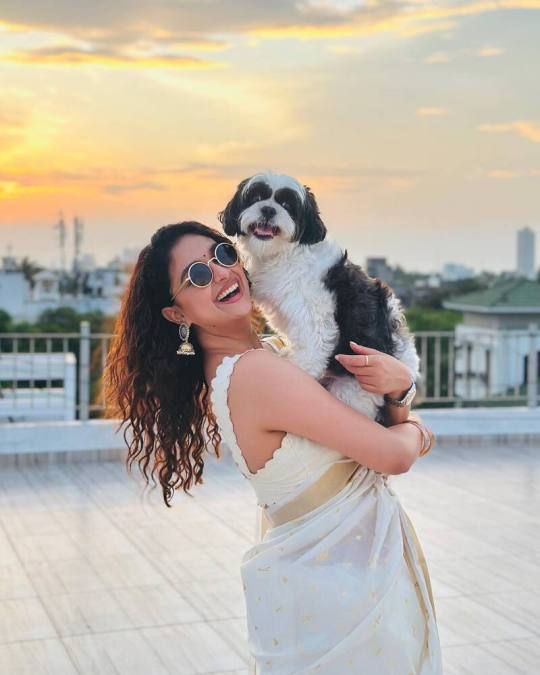
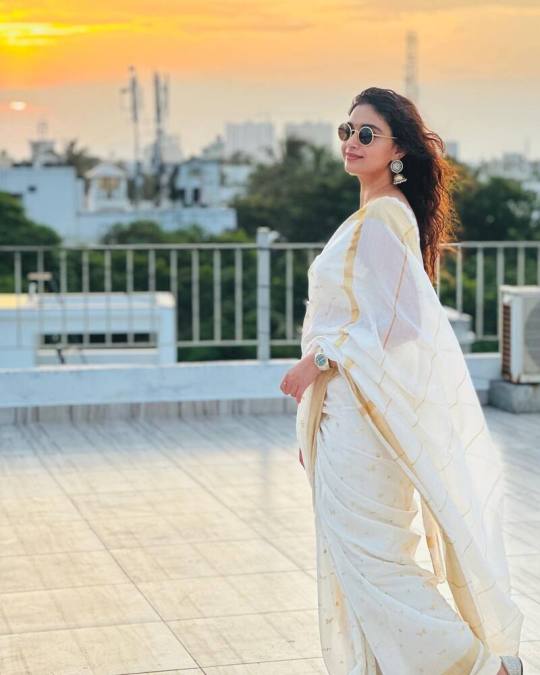
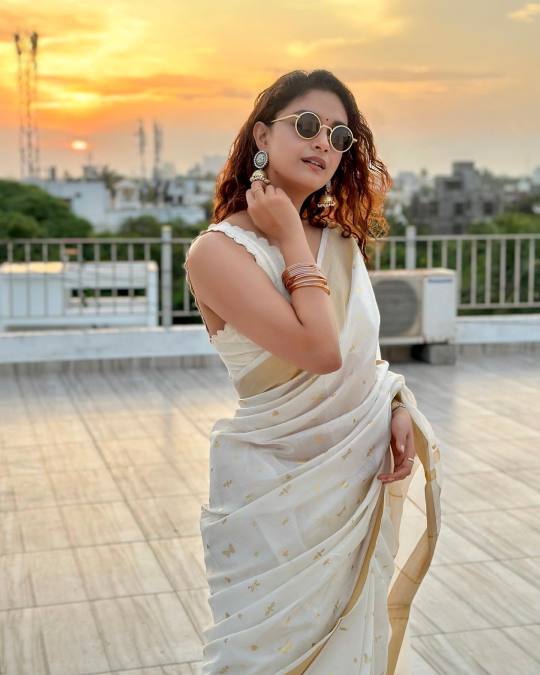
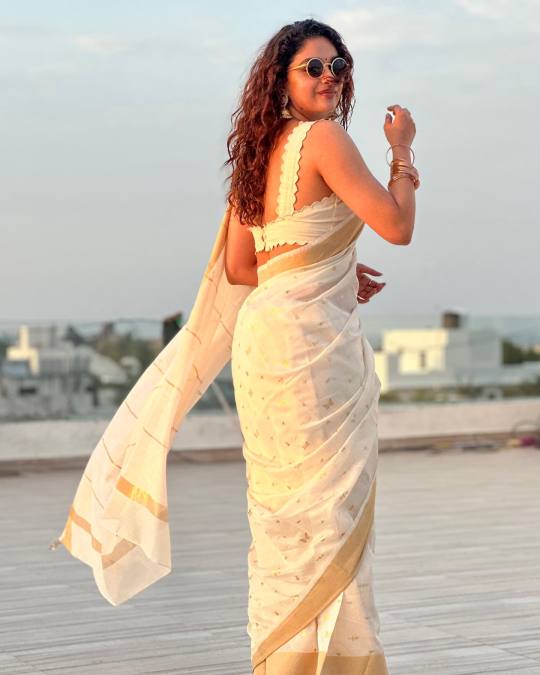
#bollywood#bollywood actress#actress#bollywood news#tollywood#photoshoot#fashion#tollywood actress#indian sarees#saree#keerthysuresh#style
20 notes
·
View notes
Note
i read the living samosa btw hi im hungry and I LOVE YOU
i love you and you need to help me
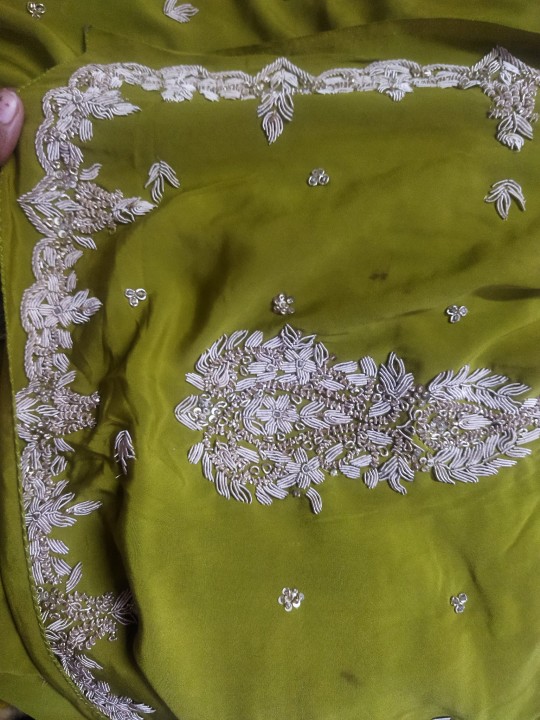
#its dabke ka work this saree trend was in 2000s apparently my mom's wedding time its her saree#i want to wear it to a wedding and style with a sexy look#also in pic its a lil dull but its actually quite vibrant#mutuals help
7 notes
·
View notes
Text
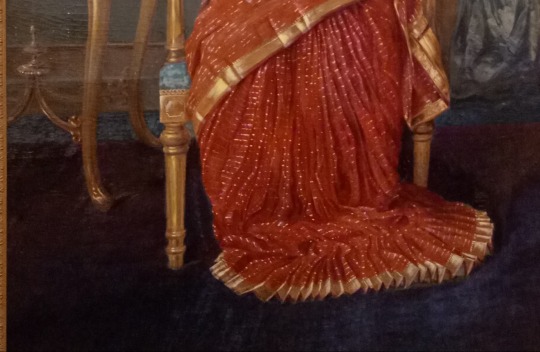
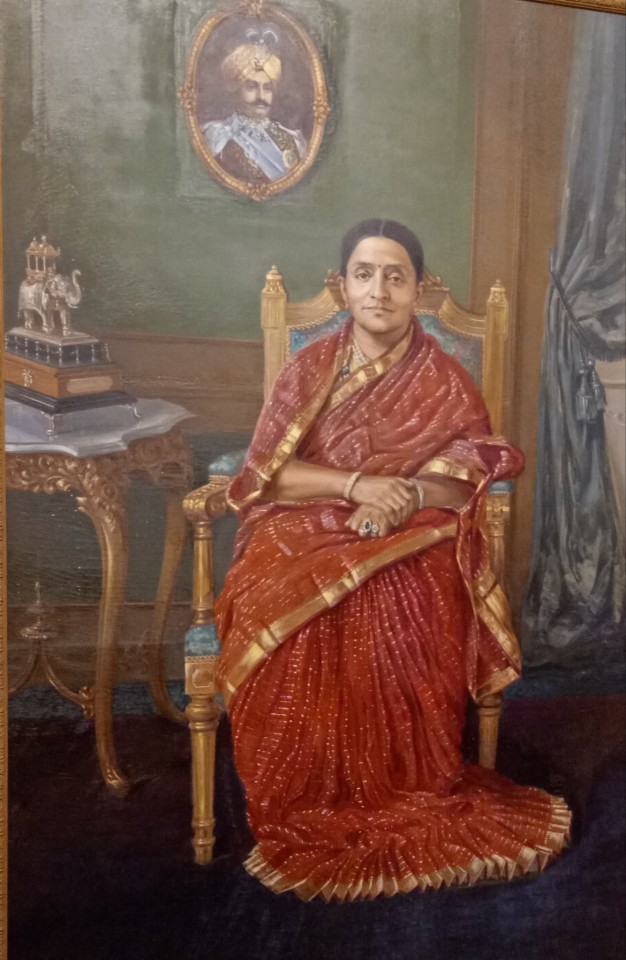


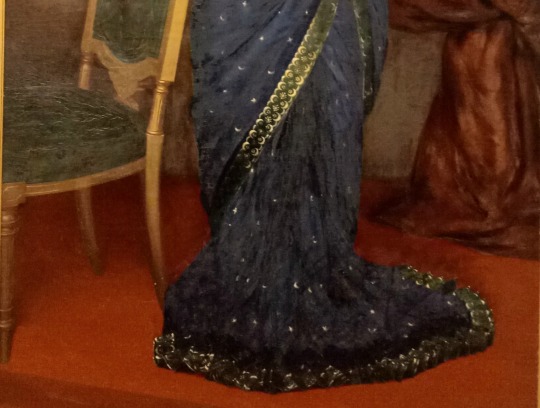
Paintings of women from the Mysore royal family in the collection of the Amba Vilas Palace, Mysore.
The way their saree flows and creates those perfect folds at their feet is fascinating, and it repeats across time and painters. Even in certain commissioned Raja Ravi Varma's. So elegant, shows off the gold jari borders and makes me think they would float around the palace in all their splendour. Or they just wore it like this for paintings (realistic).
#Mysore#Sarees#Indian Textiles#me and my ramblings#Indian Art#Oil Paintings#Royal Women#and their styles#LIKE MA'AM HOW DID YOU WALK?#art#indian aesthetic#aesthetic
29 notes
·
View notes
Text
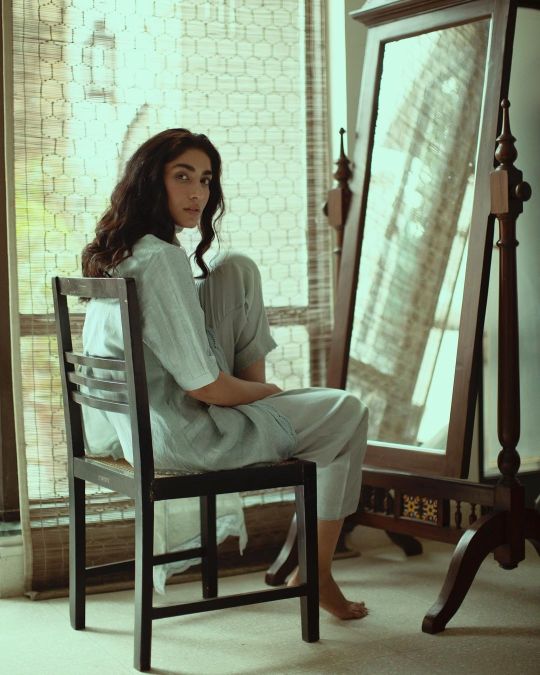
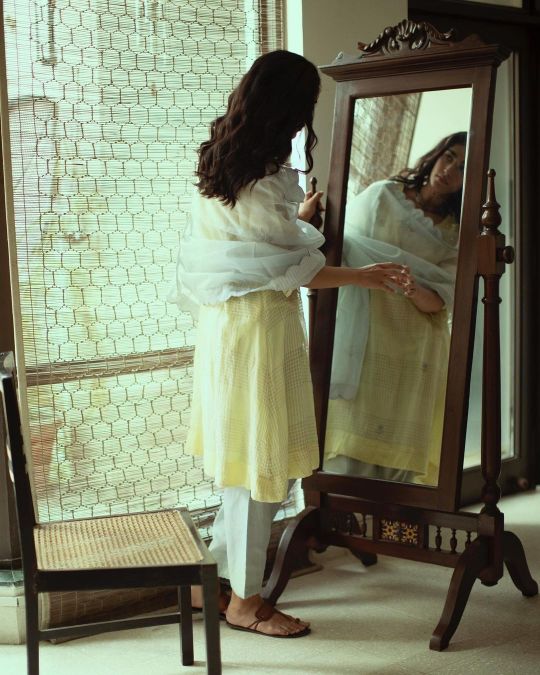
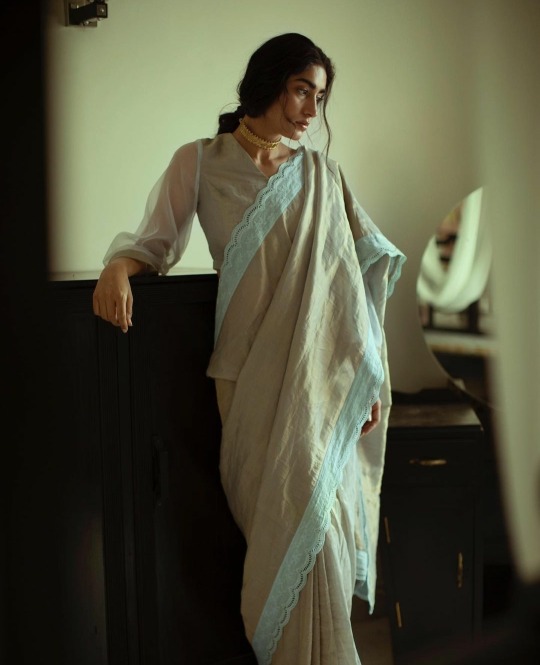
cassata: jaspreet devgan for shorse clothing, ph. kanu paliwal
#cassata bc of the pastels ... amazing#fashion#style#indian wear#sarees#cassata#jaspreet devgan#kanu paliwal#shorse clothing#upl
361 notes
·
View notes
Text

I'm so glad I live in a world where there are Octobers.
~ L. M. Montgomery, "Anne of Green Gables"
#tumblrpost#tumblog#desiblr#tumblr blog#desi tumblr#desi girl#tumblr girls#tumblr#kolkata#kolkatadiaries#bengali#durga pujo#pujo#saree#desi style#desi tag#desi feminine#festivevibes#festival#october#personal blog
23 notes
·
View notes
Photo

#aesthetic#art#clothes#fashion#fashionista#fashionporn#girly#lingerie#sexy#style#traditional dress#indian dress#saree#baby blue#sheer#skinny arms#skinny#thinspo#pretty#pretty eyes#brown eyes#dark eyes#dark hair#brunette#big earrings#statement necklace#headband
21 notes
·
View notes
Text





𝐏𝐫𝐚𝐠𝐲𝐚 𝐉𝐚𝐢𝐬𝐰𝐚𝐥 𝐫𝐚𝐝𝐢𝐚𝐭𝐞𝐬 𝐭𝐢𝐦𝐞𝐥𝐞𝐬𝐬 𝐞𝐥𝐞𝐠𝐚𝐧𝐜𝐞 𝐢𝐧 𝐚 𝐬𝐭𝐮𝐧𝐧𝐢𝐧𝐠 𝐘𝐞𝐥𝐥𝐨𝐰 𝐒𝐞𝐪𝐮𝐢𝐧 𝐒𝐚𝐫𝐞𝐞.
Pragya Jaiswal exudes unmatched elegance in her stunning yellow sequin saree. This eye-catching outfit is a perfect blend of tradition and glamour, featuring delicate sequin work that shimmers in every light. A timeless classic that adds a touch of modern luxury, Pragya’s look proves that yellow is the new black when it comes to style and sophistication.
Regards, FashionBuzz by WIFD
#pragya jaiswal#saree#yellow saree#ethnic#ethnic wear#elegance#glamour#indian fashion#celebrity style#celebrity fashion#bollywood fashion#bollywood style#blouse#blouse design
3 notes
·
View notes
Text

Dr. Niyati Sarma and her adopted daughter Osune Mael
Can yall tell how huge of a sucker i am for cross-species adoption lol but anyway this is prolly them at a family function on earth where Osune prolly got bothered by a bunch of aunties and thats why shes donning her resting 😒 face
#mass effect#doodle#drell#drell oc#niyati sarma#osune mael#if i had the energy i wouldve made osunes saree more ornate and decorative#because she prefers that type of style whereas niyati prefers more a more modern and sleek style
29 notes
·
View notes